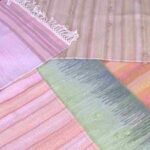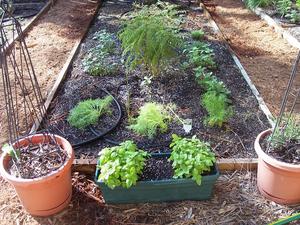A high quality Persian rug is an investment, but one that will add beauty to your home for generations to come. Because good quality Persian rugs do tend to be expensive, it’s well worth taking the time to understand what sets a good rug apart from an average one.
Consider your needs
Traditionally, the rug was considered the centerpiece of the room and the rest of the room’s decor was chosen based on it. If you’re choosing a rug for a room you’ve already decorated, though, you’ll want to consider what kind of Persian carpet would go best with the furniture, colors, and patterns in the room. The fact that Persian rugs are meant to be centerpieces means you want to make sure it won’t clash with the room’s decor. Consider the colors and patterns in the wallpaper and furniture. If you’ve already got a lot of busy patterns in your furniture or wallpaper, you can avoid clashes by choosing a rug with a simple geographic design. On the other hand, a room with fairly plain decor can be spiced up with a bright intricately patterned rug. For rugs meant to go under furniture, make sure you choose a size that will leave at least three feet extending past the edge of furniture.
Determine the rug’s quality
The quality of the rug determines not only how attractive it is, but how long it will last. Ideally, you’ll want a hand-woven rug. These will can be passed on for 4 or 5 generations, if not longer, whereas machine-made rugs tend to wear out after 20 years or so. There are a few tricks to determining whether or not a rug was hand-made. The loops on the back of the rug will be clearly visible, the rug should be flexible and not crack when folded, and any fringe will have been woven in, not sewn on. The quality of the wool used to weave the carpet. Good wools is soft and lustrous, whereas poor quality wool tends to be dull and scratchy. This is important because softer wool absorbs dyes better so it’s less likely to fade. The number of knots per inch is frequently said to be an indication of quality, but don’t get too hung up on counting knots. Even in high quality rugs, the number of knots can vary with pattern.
Don’t be fooled into assuming a Persian rug is of good quality just because it’s labeled “genuine.” While Persian rugs were once the standard by which all other Oriental rugs were judged, unfortunately these days, the mere fact that a rug was hand-made in Iran doesn’t mean it’s top quality.The creation of a quality carpet requires fine wool, color-fast natural dyes, and skilled hand-weaving, too.
Antique Persian Rug or New Persian Rug?
While most collectors focus on antique rugs, if you’re just buying one for your home–and especially if you’re on a budget–there’s nothing wrong with choosing a new rug. These days, it’s possible to find hand-woven Persian rugs made with hand spun wool and dyes from the same plants that were used thousands of years ago. These can be just as durable as rugs made years ago were. Like older rugs, they’re often created by village weavers who are true artists familiar with the meanings behind the ancestral patterns they weave into their rugs. In fact, even carpet experts can mistake a rug made this way for one made up to 100 years ago. If you have a sentimental attachment to the idea of owning an antique rug, though, be prepared to pay a few thousand dollars for the privilege.
How age matters
With a brand new Persian rug, it doesn’t matter if it was woven ten years ago or last week. Just because a Persian rug is old, that doesn’t mean it’s an antique. An antique Persian rug is one made before 1930 in Persia, present day Iran. Collectors can be sure these rugs were created according to Persian standards of quality, with the finest wool and fast-resistant natural dyes. In fact, if a rug is made with a synthetic dyes, it’s a sure sign it’s not an antique. The oldest Persian rugs that can be bought today date from the 16th century, but if you want one, be prepared to shell out $25,000 or more for it. More recently made antiques, around one to two hundred years old, can be found for less than $5,000 if you shop around. Just know that you won’t find rugs of this age piled up at your local furniture store for $500 each. If the price is too low, beware.
Condition of antique rugs
When you’re looking at a brand new Persian rug, it’s fairly easy to whether or not it’s in like-new condition. If you want to buy an antique Persian rug, though, it’s a little more complicated. Like new rugs, antique Persian rugs should lie flat with no wrinkles, ripples, or curled edges. You can expect some fading of the dye, but overall the colors should be distinct and the pattern clearly visible with minimal fading and no bleeding. Unless the rug is very old, it should be free of tears, stains, moth holes or missing pieces.
Traditional designs
In the higher quality Persian rugs, designs follow traditional patterns used in various regions of Iran. Keep in mind, though, that just because the design of a Persian rug is labeled “tribal” or “ethnic,” that doesn’t mean it’s an antique or even handmade. Persian rugs come a multitude of different patterns. They can generally be grouped into three categories: pictorial designs depicting scenes from Persian history and literature, geometric designs, and curvilinear designs which usually have a center pattern called a “medallion.” Specific rug designs are typically named after the Iran they come from, Tabriz in the northwest, Kerman in the south, and the designs created by the Baluch tribes in the east. It can be difficult for the untrained eye to distinguish which region the Persian rug comes from, but for the buyer it helps to get a sense of which region’s designs you like so you can ask for them when it comes time to buy. Take advantage of Persian and Oriental rugs stores online to look at as many rugs as possible to get a feel for what’s out there and what you like.
A word about fair trade
When you’re ready to buy a Persian rug, make sure you’re buying from a reputable, ethical supplier. Some rugs may have been made with child labor or by people paid a tiny percentage of the real value of their hard work. With antique rugs, there have been cases where dealers took advantage of rural people unaware of the value of antique Persian rugs by trading inexpensive new rugs for highly valuable antique rugs. After all, if the retailer doesn’t have the integrity deal fairly with their suppliers, they’re not likely to deal fairly with their buyers, either.


